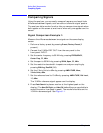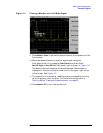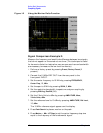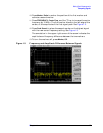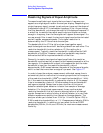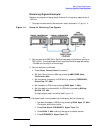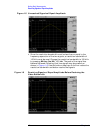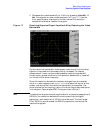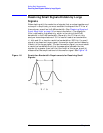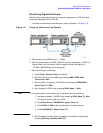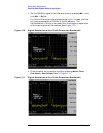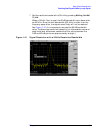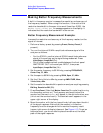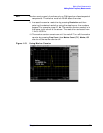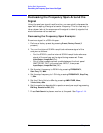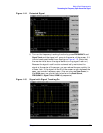
18 Chapter 1
Making Basic Measurements
Resolving Small Signals Hidden by Large Signals
Resolving Small Signals Hidden by Large
Signals
When dealing with the resolution of signals that are close together and
not equal in amplitude, you must consider the shape of the IF filter of
the analyzer, as well as its 3 dB bandwidth. (See “Resolving Signals of
Equal Amplitude” on page 14 for more information.) The shape of a
filter is defined by the selectivity, which is the ratio of the 60 dB
bandwidth to the 3 dB bandwidth. (Generally, the IF filters in this
analyzer have shape factors of 15:1 or less for resolution bandwidths
≥1kHz and 5:1 or less for resolution bandwidths ≤ 300 Hz). If a small
signal is too close to a larger signal, the smaller signal can be hidden by
the skirt of the larger signal. To view the smaller signal, you must select
a resolution bandwidth such that the separation between the two
signals (a) is greater than half the filter width of the larger signal (k)
measured at the amplitude level of the smaller signal. See Figure 1-8.
Figure 1-8 Resolution Bandwidth Requirements for Resolving Small
Signals



